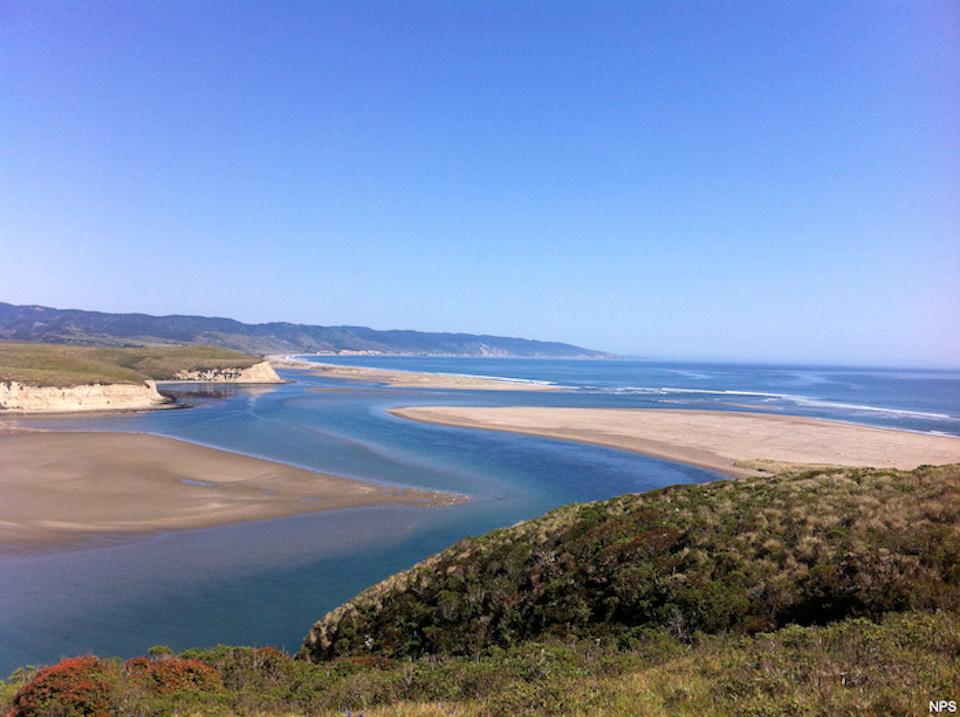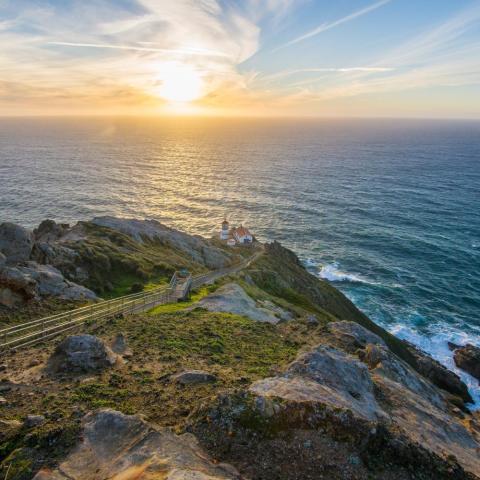
Staff at the California Coastal Commission wants Point Reyes National Seashore staff to do a better job of measuring water quality/NPS file
Editor's note: This recasts to clarify the ranching industry's role in the seashore's establishment.
While Point Reyes National Seashore staff has approved a plan to allow the ranching industry to remain in business at the seashore for two more decades, staff at the California Coastal Commission is concerned that the plan fails to adequately protect marine resources.
National Park Service staff in September issued their final environmental impact statement on how to manage the seashore's native Tule elk herds alongside cattle herds. While the plan called for maintaining the seashore's free-ranging Tule elk, it also allows for the killing of elk near livestock operations.
Ranching has existed on the coastal California peninsula for 150 years. The industry's role in the establishment of the seashore has been and remains controversial. While the seashore's administrative history notes ranchers' opposition to the seashore, the Park Service on the seashore's website explains that ranchers came around to supporting the seashore due to development pressures creeping into the area.
Marin County had embraced a favorable growth plan in the 1950s and 60s to benefit real estate developers and speculators, with assistance from the state department of transportation. With the influx of new residents, many of them affluent, property taxes for the county as a whole dramatically increased. At the same time, dairy operators nationally saw prices for the products drop considerably. Dairies regionally had been closing or consolidating for sometime, but the combination of economics, competition, labor costs, taxes, environmental regulation, and land values accelerated the pace. Point Reyes dairies feared the loss of the quality of life as much as declining profitability. If more dairies closed their doors, the fear rose that the supporting dairy industry infrastructure might collapse. Most important, the ranchers valued the pastoral landscape that their parents and grandparents had set roots in, often back to the nineteenth century.
In order to secure their place at Point Reyes, the dairy and cattle ranchers formed an uneasy alliance with the Sierra Club in hopes of preserving their ranches and west Marin open space. The National Park Service had actively sought to establish a literal beachhead on the California coast, and Point Reyes in particular, as early as 1936. Washington was approached to help solve the pressing needs of many local and national constituencies. The compromise hammered out by Congress and signed by President Kennedy in 1962 explicitly provided for the retention of the ranches in a designated pastoral zone, with ranchers signing 25-30 year reservations of use and occupancy leases, and special use permits for cattle grazing. Over the ensuing ten years, NPS acquired the 17 remaining operating ranches and the property of the abandoned ranches.
While then-Interior Secretary Ken Salazar of the Obama administration in November 2012 refused to renew the lease of the Drakes Bay Oyster Co. so the estero could be managed as official wilderness, he also directed the Park Service to work on extending ranching leases “from 10 to 20 years to provide greater certainty and clarity for the ranches operating within the national park’s Pastoral Zone and to support the continued presence of sustainable ranching and dairy operations."
In February 2016, litigation was brought against the Park Service related to the ongoing ranch planning process and the use of lands in the planning area for ranching and dairying. The plaintiffs and the Park Service, together with the ranchers and the County of Marin, entered into settlement negotiations. The court approved a multi-party Settlement Agreement on July 14, 2017. Per the agreement, the Park Service agreed that in lieu of a Ranch Comprehensive Management Plan, it would prepare a General Management Plan Amendment and Environmental Impact Statement addressing the management of the lands currently leased for ranching in Point Reyes and the north district of Golden Gate.
That effort led to the FEIS released this past September.
Groups that oppose ranching at Point Reyes on the California coast claim the 24 cattle and dairy operations, comprising 28,000 of the park’s 71,000 acres, adversely affect the environment (water quality, methane emissions, erosion, fish habitat), the infrastructure (pavement degradation from milk trucks) and recreational opportunities at the seashore.
A report from the California Coastal Commission's staff voiced concern over a lack of clarity and reporting in the seashore's plan. The commission staff noted that away from the Tomales Bay area of the national seashore water quality data had not been collected since 2013.
"The data that are available indicate that water quality standards were not typically being met in creeks in (Point Reyes National Seashore) that drain into Drake’s Estero and the Pacific Ocean," the staff noted. "Importantly, NPS is proposing to implement the same suite of best management practices and water quality protection measures in (Point Reyes National Seashore) that were successful in addressing significant water quality problems in areas upstream of Tomales Bay."
"However, the GMPA does not describe where and on what timeline these measures will be implemented, or how their efficacy will be evaluated," the report stated.
The full commission is scheduled to meet January 14, and staff has recommended that it put conditions on the seashore's agricultural plan before the Park Service issues any leases. Specifically, the staff wants the Park Service to outline a strategy for monitoring water quality beyond the Tomales Bay watershed, "with a particular focus on areas that drain to Abbott’s Lagoon and Drake’s Estero and the creeks that drain to these features, but also including areas that drain directly to the Pacific Ocean."
Additionally, staff wants the Park Service to provide an annual report to the commission's executive director that details "monitoring results and water quality analysis."
"With the incorporation of this condition, staff believes that appropriate measures would be in place to ensure that marine resources in the coastal zone would be protected, that biological productivity of coastal waters would be sustained, and adverse effects of water pollution would be minimized," said the report.
Seashore staff declined Monday to comment pending the Park Service's formal response to the Coastal Commission, which was being prepared.
While the commission staff had asked the Park Service to extend public review of the management plan through March 2021 due to the complexities of the document and keen public interest, the federal agency extended it only until January 20.




 Support Essential Coverage of Essential Places
Support Essential Coverage of Essential Places







Comments
Not necessarily. I believe that most of the ranchers didn't own their land. They were tenant farmers worried about their landlords (like RCA) selling the land for housing development. Having NPS buy the land and hoping that they could stay seems like it was better than the alternative.
when ken burns produced his documentary re the national parks, our best idea, it did not include options for cattle ranching, the pure idea and intent to leave nature to its own ecosystem. while cruel and thoughtless to murder tulle elk, california Must look at the catastrophic effects of meat and dairy production and subsequent climate disasters. brought by the methane released, 21 times more lethal than even carbon emissions. it is well the time to rethink this outdated practice which has enormously brought us to the dark hole we now inhabit.
Just to comment as a student currently looking into this case of livelihood. It's interesting in all of the comments that it seems the ranchers originally had a choice to sell they're lands. This was not in fact the case. In 1856, after California became a state, legislators turned the land over to lawyers who divied it up and then congress gave NPS money to purchase land. The ranchers then had to decide if they would "buy" it back, which remember they never agreed or had a choice in losing it, from the government in the form of giving the government a discount on the purchase. Again, this is not an argument for or against in this very tough but common issue. It's a comment of fact. And a highlight on the often forgotten history of true aquisition, it's always tough to say who was really at fault from the very beginning.
I am not sure of your point. The landowners sold their land, to the government. Some of the landoweners were already renting to tenant ranchers. But prominent ones owner many ranches - Mendoza, Grossi, McClure, were there in congress testifying against the park. That changes nothing; tenants "hoping they could stay" is fine. But they have no legal right to, and the operations are polluting the national park. This is not complicated. It is well past the time they were supposed to move out, and the public is fed up with it.